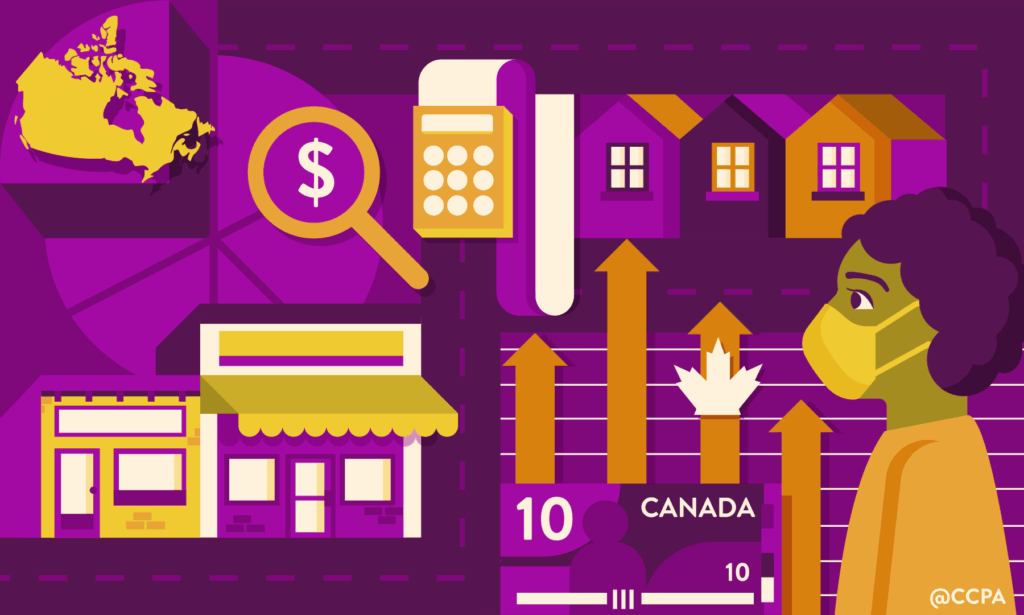Both Prime Minister Trudeau and Finance Minister Chrystia Freeland reiterated their commitment to lay the groundwork for a Canada-wide system of child care at the Liberal Policy Convention this past weekend.
“Now is the moment that Canada needs to get this done; that we need to build for the women of today and the parents of today,” Ms. Freeland told the convention on Thursday night. “I really believe COVID has created a window of political opportunity … on the importance of early learning and child care.”
But we’ve heard these promises before, fifty years of these promises, dating back to the
Royal Commission on the Status of Women. Fifty years of task forces, commissions and inconsequential federal-provincial/territorial agreements. Fifty years of largely unaffordable services that are “inequitably distributed, insufficiently available and of uneven quality,” staffed by a mostly female, largely racialized workforce who are “underpaid, underappreciated and inadequately supported.”
Budget 2021 represents a transformational opportunity to create a system of comprehensive, high quality, publicly managed caring services across the country—not only in child care but across the whole of the caring economy including long term care, gender-based violence, and other essential community supports. Will this time be different?
The poor treatment of the largely female and racialized staff is also endemic in the long-term care sector—the result of decades of austerity and growing privatization of service in many provinces.
The need is acute
COVID-19 has laid bare how essential care is to our society, but also how fragile our care systems are. Canada’s patchwork of child care services, for one, is buckling under the stress of the pandemic. Since the large scale closures of child care centres last spring, the implementation of new public health protocols and the uneven return of children have resulted in significant financial challenges for many providers.
The CCPA’s own survey of child care centres, released in March, found that in every city outside Quebec, there were at least 10% fewer children in child care in the fall of 2020 compared to February, and 27 of 37 cities showed enrolment drops of 20% or higher. With the end of the Canada Emergency Wage Subsidy (CEWS) slated for the end of June, Maya Roy, chief executive officer of YWCA Canada, believes that about 50% of non-profit centres and 20% of for-profit centres are at risk of going under. “That’s bad news for a system that’s already stretched so thin that there are only enough licensed daycare spots for one in four Canadian kids.”
Financial instability has only made more precarious the work of over 200,000 early childhood educators and child care workers. Attracting staff back has been a huge issue, given the workload demanded and very low rates of pay, benefits and employment protections in this sector. In 2019, Ontario child care workers earned just over half (54%) of the average hourly wage.
The poor treatment of the largely female and racialized staff is also endemic in the long-term care sector—the result of decades of austerity and growing privatization of service in many provinces.
The reliance on a subcontracted labour force whose members work multiple low-wage jobs to make ends meet, and conditions of employment that work against quality care and recruitment opened LTC facilities to the virulent spread of infection. These largely female and racialized workers receive the lowest wages in the health care sector, are given variable and minimal formal training in LTC, and have limited access to employment protections and benefits. Residents and workers continue to pay with their lives.
The evidence is clear: Investing in the care economy benefits everyone
Higher wages and stronger employment protections, full-time hours, investments in training, and improvements in working conditions are fundamental to combat the virus in the short term and create higher quality jobs in the care sector over the long term. This will not only provide greater security for workers, it will promote caring relationships with residents, which is at the core of good care.
Investment in the care economy is also essential to women’s sustained economic engagement and long-term economic recovery. Female-majority sectors were hit hard and fast last spring. Upwards of 30% of all female workers were impacted by job loss and millions more have been touched by the crisis. But, the largest losses were among those employed in low-wage jobs— a workforce in which Indigenous, Black and racialized communities, immigrants and refugees, women living with disabilities, are significantly overrepresented.
A year later more women are back at work and picking up hours, but the recovery is proving to be as inequitable as the downturn. Some sectors of the economy and groups of workers bounced back quite quickly (barely skipping a beat), while others are facing prolonged economic hardship now and into the future. This includes single parents and other women who have dropped out of the labour market altogether to shoulder the huge increase in unpaid labour and care that has accompanied the pandemic.
Investment in the care economy, at one and the same time, supports women’s paid employment, and serves as an important source of jobs, especially for Black, racialized, immigrant and migrant women. It has the extraordinary benefit of paying for itself over time through increased employment and earnings, reduced income security benefits and emergency services, and healthier communities.
Research from the Women’s Budget Group in the U.K. estimates that investments in the care economy result in 2.7 times as many jobs as investments in traditional physical infrastructure, half of which is recouped by government through direct and indirect tax revenue.
There are no shortcuts. We have several years of system building ahead of us—and no shortage of barriers in our path.
Practical solutions are at hand
Recovery planning needs to prioritize moving beyond the fragmented approach of underfunding, privatization, and exploitation of those working in care sectors, propped up by systemic discrimination. Significant investments in quality public services will not only lift women workers, but have a cascading positive impact across the economy, environment, and communities.
The federal government can seize this moment to facilitate the creation of a system of comprehensive, high quality, publicly-managed caring services for all Canadians.
Several proposals have been put forward for expanding affordable, high quality child care and long term care. They all turn on two key axes: 1) long-term efforts to increase the quality, capacity and compensation of care workers, and 2) renewed federal leadership to support the expansion of high quality, publicly-managed, affordable care services across the country.
Next Monday, we will be looking for a substantial investment in child care—to stabilize the system in the term—and an increase of $2 billion per year thereafter to move Canada towards a fully publicly funded system. Transfers to the provinces, territories and Indigenous governments must include measurable targets in accessibility, affordability, quality and inclusiveness.
Similarly, the budget needs to set out the government’s plan for working with provincial and territorial governments to bring the sector fully into the public system and establish national standards of care. This too requires substantial federal investment to expand quality institutional and home care in the public and not-for-profit sectors, with the goal of phasing out all for-profit delivery of service. In a country that spends 30% less than the average OECD country on long term care such an investment is long overdue.
The federal government can play a vital role in elevating the quality of employment in Canada’s care economy through sector-specific labour force strategies that ensure appropriate valuing of the skill, effort, responsibility, working conditions, and support for equitable, decent working conditions. Pay and benefits must be equitable across the country and equitable both across the institutional and community sectors and between regulated and unregulated staff.
Will Budget 2021 deliver?
There are no shortcuts. We have several years of system building ahead of us—and no shortage of barriers in our path. The cooperative spirit that animated our initial response to the COVID-19 crisis has disappeared. The federal-provincial/territorial response to the crisis in the care economy—and in women’s employment specifically—has been uneven at best and non-existent at worst.
Governments like Ontario are pouring money into individual cash transfers to parents as a direct response to the crisis in the child care sector, an action that does little to assist with the enormous expense of child care and will only foster the growth of the already grossly inequitable private market in services—a direction that has had such devastating impact in the LTC sector.
“Cash for care” is not the only looming challenge. We have seen as well the emergence of digital platforms in the health field, bypassing the already highly problematic use of temporary agencies in the long term care sector. Independent contractors are matched with available positions—all with little vetting, oversight or any protection for workers.
The expansion of the gig economy into the care economy is a harbinger of greater exploitation and marginalization ahead—in the name of crass arguments about individual autonomy. As if the most marginalized workers in Canada have any degree of autonomy over their conditions of work. As if we don’t fully understand the deadly consequences of expanding this form of employment.
Conditions of work are conditions of care. Say it again.
Conditions of work are conditions of care. Say it again.
What will it take? The most serious population health crisis in a century? 14,000 deaths in our long term care homes—the worst record of any wealthy country? The lives of millions of children and their families turned upside down? The devastating pressures on mothers—evident is rising rates of depression and anxiety?
Budget 2021’s overarching mandate must be to confront the devastating impact of social and economic inequalities laid bare in this crisis. The rebuild must start with the care economy.








